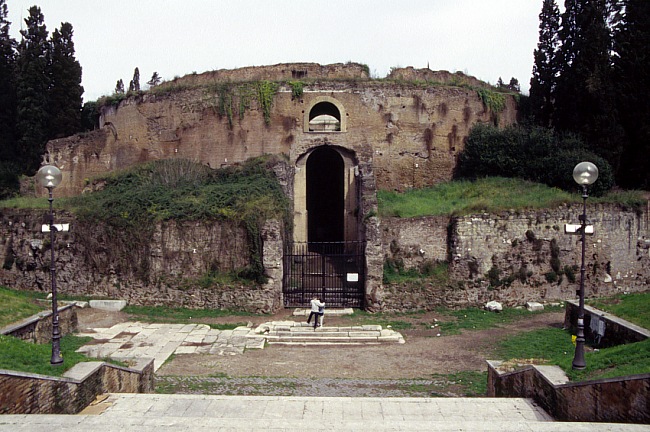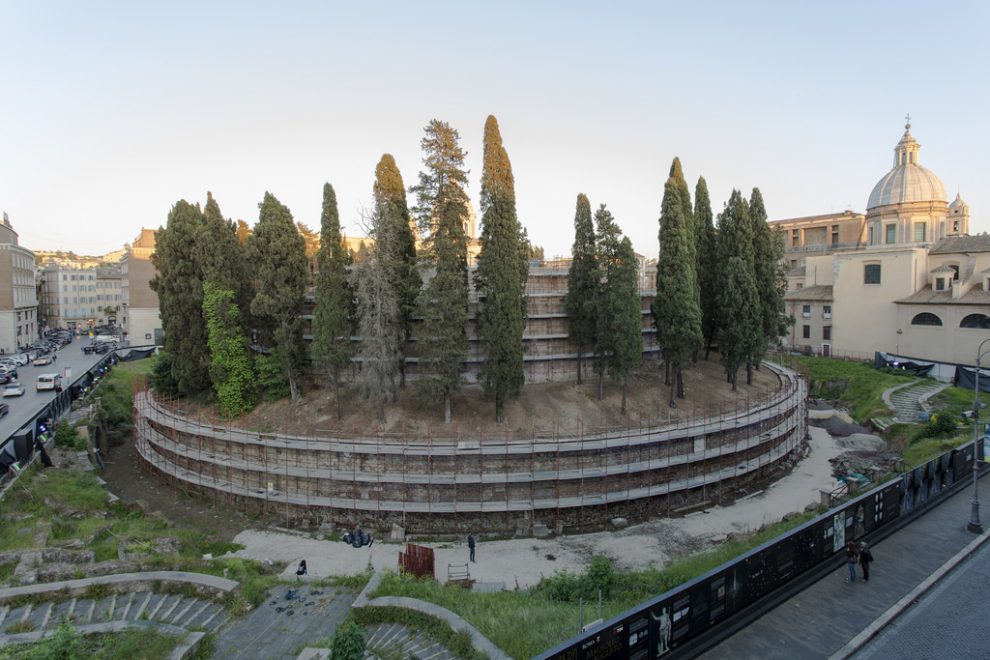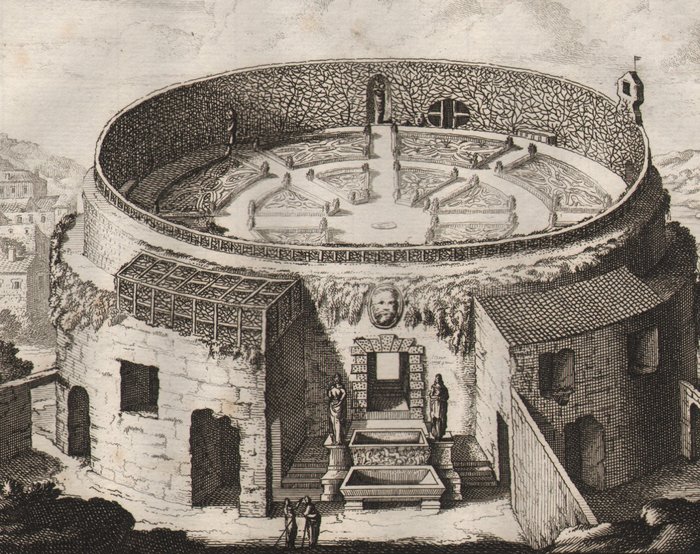Mausoleum and Campo Marzio of Augustus

Remains of the high circular tomb of the Roman emperor, originally a majestic monument with a bronze statue.
Originally it occupied part of the northern area of ??the area called Campo Marzio.

This is the description that Strabo gives us:
«The most notable [among the monuments] is the so-called Mausoleum, a large mound of earth, raised near the river [Tiber] above a high round base of white marble, all shaded by evergreen trees, up to the top, on which it was the statue of Caesar Augustus, in gilded bronze. And under that mound were the burial cells of him, of his relatives and closest friends. Behind there is a large sacred wood which offers wonderful walks. In the middle of the field there is an enclosure, also of white marble, built around the crematorium of Augustus, which has a circular iron balustrade and inside there are poplars. "
(Strabo, Geography, V, 3.8.)
The monument, devastated by centuries of looting and removal of materials and definitively freed from excavations only in 1936, with its diameter of 300 Roman feet (about 87 m), is the largest circular sepulcher known. The complex structure with overlapping floors is determined by a base in travertine 12 meters high and perhaps terminated at the top by a Doric frieze with metopes and triglyphs, on which rests the circular building composed of seven concentric rings, connected to each other by radial walls. Two other lines of walls formed a second series of chambers.

Finally, there was the first practicable environment, at the end of the long entrance corridor: an arched sector, originally faced by a high and thick wall covered with travertine, in which two entrances opened.

This wall, preserved in a small part, certainly constitutes the substructure of a drum that had to emerge from the mound, creating a second shelf: we are therefore faced with a complex structure, with overlapping floors.

Beyond the wall a practicable annular corridor supported the cell which was also circular, equipped with an axial entrance and three symmetrical niches, corresponding to the axes.

In the center, a large pillar contained a small square room, which should correspond to the tomb of Augustus, in significant correspondence with the bronze statue of the emperor that stood at the top of the pillar.

In front of the entrance were placed the two pillars with the bronze plates affixed on which was engraved the official autobiography of the emperor (Res gestae Divi Augusti) whose copy, engraved on the temple of Augustus and Rome in Ankara and in buildings of other provinces, has come down to us.

Aerial view of the building.

Video: Mausoleum and Campo Marzio of Augustus
Map: Mausoleum and Campo Marzio of Augustus
Address: Piazza Augusto Imperatore, 00186
Roma (RM) Lazio
Latitude: 41.9059980878305
Longitude: 12.476429343223572
Site: https://www.mausoleodiaugusto...
vCard created by: Stefano Vigolo
Currently owned by: Stefano Vigolo
Type: Manufactured
Function: Archaeological site
Creation date:
Last update: 02/01/2023